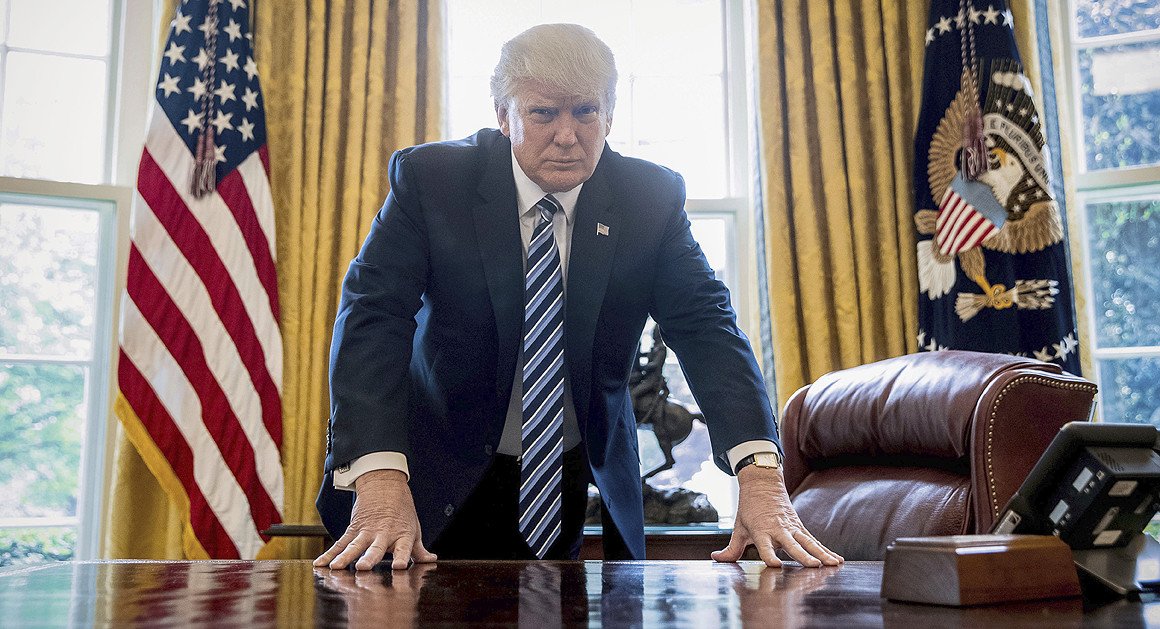When Donald Trump delivered his speech in Gettysburg last October, outlining his first 100 days in office if elected, some people might have deemed it too ambitious to be true, while some others simply saw a near-zero chance for him to win the election. The story after that is familiar to the world. The businessman beat the politician and the Gettysburg speech becomes a significant lead-in of the first 100-days policy.

April 29 marked Trump’s 100th day in office. Considering that the new president enjoys both majorities in House and Senate, the start of his administration should have been a honeymoon just like his predecessor Obama, who signed 55 bills into law during the same period. However, Trump had far less.
Trump did have great ambitions on his domestic reforms or adjustment, which can be generalized as “3+3”. The first “3” is the major reforms Trump stressed a lot including repealing and replacing Obamacare, achieving tax reform and addressing infrastructure.
Unfortunately, Trump not only underestimated the polarized Congress but also overestimated the sway of his team and Paul Ryan to keep Republicans sticking together. He failed to prevent the conservative House Freedom Caucus from blocking his first major legislative initiative. The debacle on healthcare reform had a ripple effect on Trump’s plan to push forward the other two major reforms and drove a wedge between the president and some House Republicans.
The second “3” represents mainly policy adjustments on trade, homeland security and immigrants via executive orders. Due to his struggles to pass legislation through the Congress controlled by his own party, Trump signed a record number of executive orders, relying on a presidential tool he once criticized.
On trade, Trump has turned from multilateralism to bilateralism, focusing more on protecting the domestic market and creating jobs. On homeland security and immigrants, he signed a series of controversial executive orders to strengthen border security and tighten immigration policy, formulating a travel ban and directing the construction of a wall on the US-Mexico border. Most of the efforts have met strong opposition and even spurred a huge backlash.
Comparing with his original domestic 100-day agenda, it’s fair to conclude that Trump failed most of the mission. The internal chaos in the White House has its due contribution to the failure. On one hand, different tribes in the White House have rivaled for influence on Trump’s policy decision. On the other hand, the new positions and institutions created by Trump and taken by his family members and inner circle, such as “Strategic Initiatives Group” led by Steve Bannon, and the White House Office of American Innovation led by Jared Kushner, have marginalized the traditional policy-making institutions and cabinet officials from the very beginning.
If we look at his foreign policy record in the first 100 days, it seems that the new president is a quick learner and the uncertainties in this regard have been largely diminished. His foreign policy reminds us how a GOP president traditionally would behave and can also be summarized as “3+3”.
First of all, the Trump Doctrine on foreign policy consists of three pillars. Number one is to secure the global leadership of the United States by strengthening its military power and economic development. Number two is to seek security for the country including border security, homeland security and overseas security. Number three is to stop trying to transplant US democracy or ideology to other countries.
Another “3” is that President Trump put three regions on the top of his list, namely the Asia-Pacific, Middle East and Europe. Regarding the Asia-Pacific region, although the government declared the end of the “Rebalance”, the cores of that strategy remain as the vein of Trump’s regional policy, including facilitating its alliance system, dealing with China in a balanced way and safeguarding a regional order in lines with US interests.
Trump’s Middle East policy almost represents the mainstream of the GOP. He has given top priority to counter-terrorism and relied on military approaches by sending more troops to the region. Meanwhile, Trump improved US relations with its regional allies and partners including Israel, Saudi Arabia and Egypt while adopting a harsher attitude towards Iran.
Trump has gone back on his words about European affairs. After Theresa May and Angela Merkel’s visit to the US and frequent visits paid by US cabinet officials to Europe, Trump’s learning curve on Europe has dramatically shortened. He admitted that NATO is not obsolete and planned to resurrect TTIP. All those changes will relieve Europe’s fear of “Trump Shock” and put transatlantic relations back on the right track.
Despite clearly having learned a lot from the process, during his first 100 days in office, Trump created more problems than achievements. The next 100 days or 200 days will be equally critical for his domestic reforms and overseas agenda. The challenges and stakes ahead are abundant. Trump needs a breakthrough on his major reforms as soon as possible to garner the momentum and inject confidence to his supporters. Meanwhile, Trump should streamline his internal decision-making process and let professional cabinet officials to play their roles in the political system. Now it is not the time to “drain the swamp”, but to face the reality.

